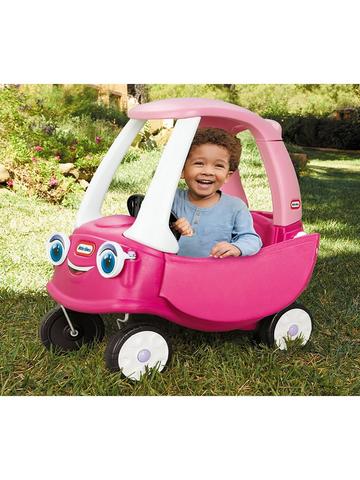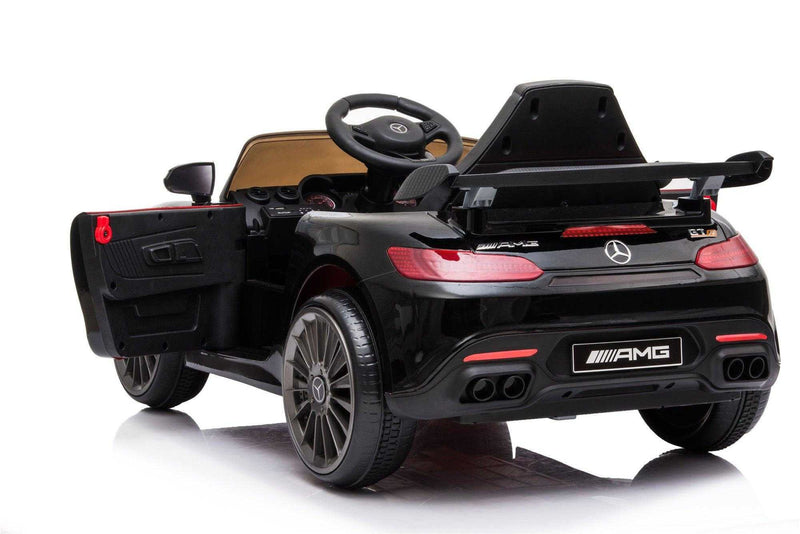Understanding the battery time and the life span of a car that is electric is vital to ensuring that your child has an enjoyable and safe ride. What you need to understand the battery type
The majority of electric vehicles designed for children use rechargeable batteries, which are typically lead-acid or lithium-ion batteries. Lithium-ion batteries generally offer longer battery life as well as faster charging times compared to lead-acid batteries.
Capacity of Battery
The capacity of the battery can be measured in either watts-hours, or ampere-hours. Batteries that have a greater capacity allow for a longer play time before requiring recharging.
Run Time -
The runtime of an electric car is the length of time that a vehicle can run continuously on a single battery charge. This is influenced by factors such as battery capacity, power of the motor, the terrain and the weight of the driver.
The typical time to run electric ride-on cars is between 30 minutes to 2 hours. Some high-capacity battery packs may offer longer durations.
Charging time -
The time for charging is the time needed to recharge the battery fully after depletion. The charging time is contingent on the specifications of the charger, battery capacity, and the charging method.
On average, charging times for electric ride-on vehicles vary between 8 and 12 hours for a complete charge. Certain models can charge faster speeds, especially with lithium-ion batteries.
The battery's security and longevity is ensured by following the manufacturer’s charging guidelines. The battery's performance and its life span could be affected negatively through overcharging or undercharging it.
Charge Methods Charge Methods
Electric ride-on vehicles typically have a charging station that plugs into a regular household outlet. Certain models have rapid charging features or smart chargers which examines the status of the battery, and then adjusts the charging rate accordingly.
To prevent battery damage or damage to electrical systems, ensure the charger in the ride-on vehicle is compatible with the charging port.
Additional Batteries
Some ride-on electric vehicles will allow you to purchase extra batteries or spares for longer playtime. If you have additional batteries in your possession, you can easily swap out depleted ones for fully charged ones to minimize the time between repairs.
If you know the battery life and charging times of an electric ride-on children's car it is possible to ensure that your children have enjoyment and uninterrupted playtime as they explore their surroundings. The life and performance of the battery will be increased by regular charging of the batteries and following correct charging procedures. View the top rated Mercedes ride on car for more examples including toy a car, kids electric cars, toy and car, ride on toy, electric toy car, car for toy, race car toy car, digger ride, electric ride on cars, lambo toy car and more. .

What Are The Reasons For Different Levels Of Proficiency For Electric Ride-On Vehicles?
The majority of electric rides have different settings for speed and controls to accommodate children with different abilities and provide an enjoyable and safe riding experience. Here's the process and reasons behind the reason for their use.
Different children have varying levels of proficiency and confidence in driving in ride-on vehicles. With various speed settings, parents can adjust the car's maximum speed in accordance with their child's capabilities and reduce the chance of collisions, accidents or accidents.
Low speed settings are great for children who are just beginning or who are still learning how to operate the ride-on vehicle and higher speeds are suitable for older children or those with more experience.
Gradual Learning Curve -
Children can gradually improve their driving skills by using electric ride-on cars that come with various speeds. For beginners, it is possible to familiarize themselves with controls and gain confidence by beginning with lower speeds.
As the child's driving abilities improve and speed increases, parents can increase the speed slowly. This gives them a sense progress and accomplishment.
Parental Control
Some electric ride on cars have parental controls that allow parents to limit the maximum speed at which their child can travel. This feature can give parents security knowing that they are able to alter or modify the speed according to their needs in order to ensure the safety of their child.
Options for parental controls available could include remote speed limiters remote emergency stop buttons and remote steering capability, depending on the model of vehicle.
Adaptability
As they grow and mature, children's interests and skills will change. Electric ride-on cars with multiple speed settings offer flexibility and flexibility to accommodate these changes as they happen.
As a child gains confidence and proficiency, they can advance to higher speeds. This can result in a more thrilling ride. Parents can also dial down the speed to accommodate smaller children as well as their companions.
Customization -
Multi-speed settings allow you to customize and personalize the ride experience according to the individual's preferences. Children can select a setting that best suits their needs and also the intensity they would like to experience.
Some electric ride-on vehicles include additional control options, such as variable braking or acceleration sensitivity. This allows drivers to tailor their experience according to individual needs.
Electric ride-on vehicles that have various speed settings and control features provide a safe and adaptable riding experience for youngsters of all ages and abilities. These features help build confidence, growth in skills, and fun adventures, while allowing parents to supervise and intervene as needed. View the top rated JCB ride on toys for blog advice including 2 seater electric cars, remote control childrens car, digger ride, toy car, electric ride on cars, electric ride along car, remote control childrens electric cars, toy car toy car, remote control childrens electric cars, digger ride and more. .

What Kind Of Children's Remote Controlled Cars Are On The Market? What Are The Pros And Cons?
The diverse sizes, designs, prices, and types of children's cars with remote controls are available to meet the budget and requirements of all. This article will provide an overview of the types, sizes, prices along with pros and cons of remote controlled cars for children The types of remote control Children's Cars -
Electric RC Cars - Battery-powered remote-controlled cars that can be used for both outdoor and indoor use. They are available in many styles, such as buggies, trucks and sports cars.
Nitro RC Cars : Gas-powered vehicles that are controlled remotely and have better performance, but need more care. They tend to be larger and more costly than electric RC car.
Scale Models: Remotely controlled replicas that include real vehicles such as cars, trucks, planes and boats. Scale models vary between 1-10 and 1-24, with the larger scales offering more detail.
Sizes -
Remotely controlled children's cars come in different sizes. They range from small microsized replicas up to large-scale copies. The weight and size of the car can affect the performance.
Micro-sized cars are light and compact. They're ideal for young children as well as indoor use. The larger cars have more power and durability and are perfect for outdoor racing and off-road driving.
Prices
The cost of a car with remote controls for kids varies based on its size of the vehicle, its features, manufacturer and build-quality.
The micro-sized electric and nitro-powered RC car can be found in sizes that range from $20 up to $100.
Model cars in scale and top-of-the-line hobby RCs cost between several hundred and more than a thousand dollars, based on how detailed and powerful they are.
Pros and Cons -
Pros -
Adults and kids can both enjoy the fun and excitement of remote-controlled cars.
Skill Development The use of RC vehicles helps develop hand-eye coordination, spatial awareness and problem-solving abilities.
Social Interaction-RC cars are a great way to play with families and friends, promoting social interaction and cooperation.
Customization - A lot of RC vehicles can be upgraded by adding upgrades and accessories, which will enhance their performance and appearance.
Cons -
Costs - Top-quality cars with the latest features, such as hobby grade automobiles, can be very expensive.
It can be difficult for children to operate the RC cars for the first time.
Maintenance - RC vehicles require regular maintenance, which includes cleaning, lubrication, as well as occasional repairs or replacements of parts.
Safety Issues Safety Concerns RC vehicles could be hazardous in the event that they aren't operated responsibly under adult supervision. They can result in accidents, falls and electrical dangers.
Children of all ages will enjoy remote control cars. It is crucial to think about things like cost, size and security before deciding on the most suitable model. Hobby-grade RC cars may be best for older kids or people who enjoy. Less complicated models are better for beginners and younger children. View the top electric kids cars kidscars.co.uk recommendations for more tips including electric two seater cars, childs ride on car, toy with car, remote control childrens electric cars, kids electric cars, toy car toy car, car for toy, ride on toy, ride on toy, a toy car and more. .
